- What is hydrogen peroxide?
- Health & beauty uses for hydrogen peroxide
- Using hydrogen peroxide around the house
- How to clean with hydrogen peroxide
- Where to buy hydrogen peroxide
Do you have a bottle of hydrogen peroxide hiding at the back of your bathroom cupboard? Better go seek it out.
From treating acne to gardening, today we're sharing 39 nifty ways to use hydrogen peroxide that you don't want to miss.
What is hydrogen peroxide?
Hydrogen peroxide's (H2O2) scientific name may sound scary, but it’s a lot more versatile than you may think. This colourless liquid has strong oxidizing properties, making it one of the World's most effective disinfectants. It also has lightening powers, which are useful for a load of different things from cleaning to beauty.
Ready to discover the magic of hydrogen peroxide? Let's get started!
BEFORE YOU START: Please be careful when handling Hydrogen Peroxide. The tips here are suggestions, and each should be carefully considered before putting into practice.
Health & beauty uses for hydrogen peroxide
Who knew hydrogen peroxide could do more than bleach hair?
1. Whiten teeth
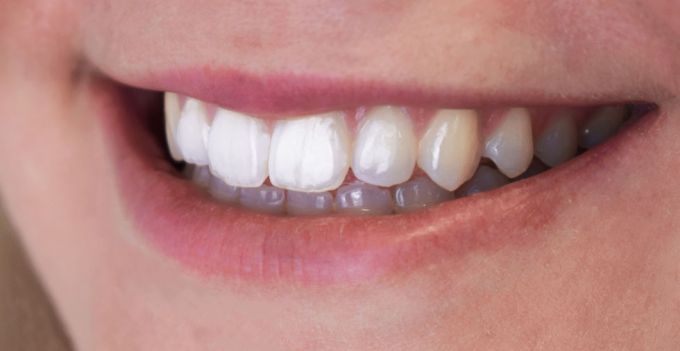
Want whiter teeth? Mix hydrogen peroxide with baking soda until a paste is formed to make a weekly homemade stain remover for your coffee or tobacco-stained teeth.
2. Antiseptic mouth rinse
Make your own mouthwash! Combine 1 part hydrogen peroxide with 2 parts water and swirl around your mouth to help kill any stubborn germs on teeth, tongue and gums that can lead to bad breath - all it takes is 30 seconds of swishing.
This is also recommended by orthodontics for those new to braces. The solution will calm inflammation and ease the pain.
3. Whiten nails
If your nails have been stained from endless nail polish applications, soak your fingertips in a small bowl of hydrogen peroxide.
Rinse thoroughly to reveal cleaner nails and whiter French manicure-esque tips.
4. Clear up acne breakouts
Spots are often caused by bacteria. Germs can be easily spread onto the face when you touch your skin or itch your eyes. Hydrogen peroxide can come in handy as a face rinse as it will kill bacteria and also help dry out any existing spots.
Squirting onto a cotton pad and apply gently to the area. Leave for 5 minutes before rinsing clean.
NOTE: Always do a patch test first.
5. Soften corns & calluses
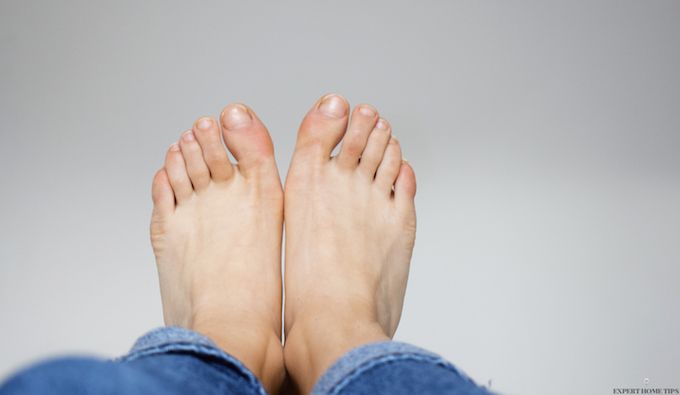
Sandals don't look so chic on feet with calluses and corns.
You can effectively soften painful corns and calluses with a hydrogen peroxide foot soak.
Mix equal parts of hydrogen peroxide and lukewarm water before popping your feet inside for 20 minutes.
6. Prevent swimmer’s ear
Swimmer's ear is an infection of the outer ear canal caused by bacteria and fungi. It's common in swimmers as prolonged periods spent in water can break down the skin and allow bacteria or fungi to penetrate.
Like to swim a lot but don’t like the inevitable swimmer's ear syndrome?
Mix equal parts hydrogen peroxide and white vinegar in a small bottle with a dropper lid. Apply a few drops into each ear after swimming to prevent infections from forming.
7. Ear wax removal
Although many of us use cotton buds to clean our ears, they're not actually recommended by professionals as they can easily damage delicate ears drums.
A safer way to remedy built-up ear wax is using hydrogen peroxide. Tilt your head and add a couple of drops of hydrogen peroxide into your ear, wait a few minutes then follow with a few drops of olive oil. After another few minutes, tilt your head the other way to drain out any excess fluid.
8. Treat athlete’s foot
Athlete's foot is another fungal infection, but despite the name, it isn't unique to athlete's alone. The damp environment inside our shoes it what often causes bacteria to form and thrive.
Hydrogen Peroxide has excellent anti-fungal properties, making it a great solution for this common problem.
Make a solution by combining equal parts hydrogen peroxide and water then apply to your feet nightly so it can get to work on fighting the fungus.
9. Relieve ear infections
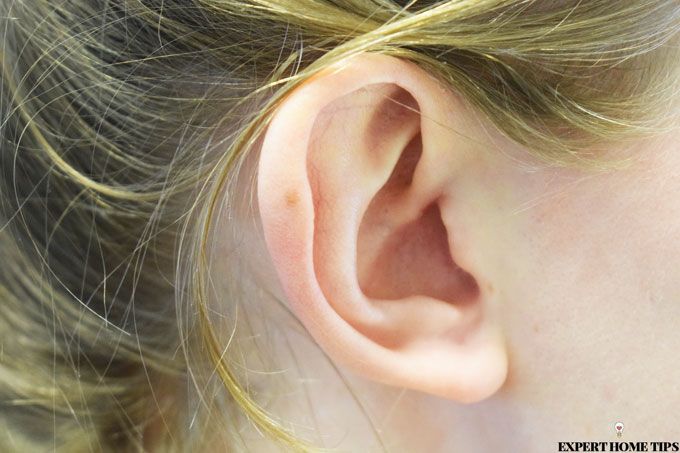
If you’re suffering from an ear infection, help relieve the pain with a few drops of hydrogen peroxide in each ear.
It won't get rid of an infection but it can aid recovery.
Diluted hydrogen peroxide is also a great solution for dogs who have chronic yeast or bacterial ear infections. Mix 1 part hydrogen peroxide with 1 part water and apply to your dog's ear with a cotton ball.
10. Disinfect toothbrushes
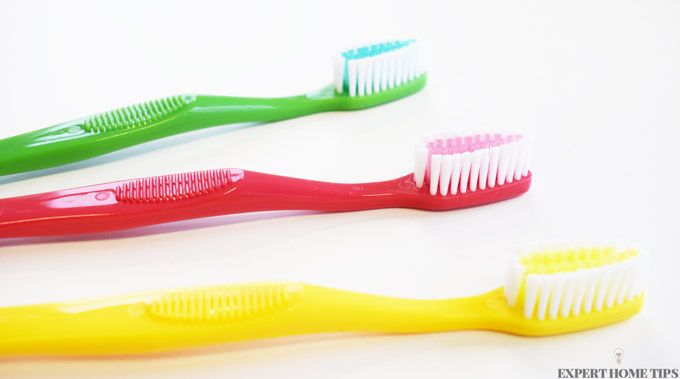
When was the last time you changed your toothbrush? If it's been a while, it might be a good idea to disinfect it.
Soak toothbrushes in hydrogen peroxide to zap bacteria and other germs that can be found in the bathroom environment.
11. Treat ulcers
Canker sores, more commonly known as ulcers, occur inside the mouth and are caused by a range of factors from stress to stopping smoking.
They can take around two weeks to heal naturally, so it's worth considering a natural remedy to speed up the process.
Mix 1 part 3% hydrogen peroxide with 1 part water and dab onto the ulcer using a cotton wool pad. Reapply to the affected area a few times each day.
12. Treat colds
Colds aren't often serious, but they can be annoying!
Many people claim to have banished their colds almost instantly by administering a few drops of hydrogen peroxide into each ear.
We'd definitely like to try this one!
13. DIY deodorant
Out of deodorant? Don't panic!
You can whip up a quick DIY version with 35% hydrogen peroxide and bicarbonate of soda. Apply under arms and it will keep you smelling fresh all day long.
14. Disinfect small wounds
Not got your first aid kit to hand?
If you’ve got a small cut or graze to deal with, reach for the H2O2 which is a natural antiseptic.
It can be applied directly to minor wounds to clean away dead tissue and help prevent any infections.
NOTE: Hydrogen peroxide should only be applied once as using it on a wound too much may inhibit friendly bacteria which is essential for the wound to heal.
15. Highlight hair
Get that sun-bleached look without the sun or an expensive trip to the salon! Spray hydrogen peroxide over damp hair and let it soak in for 10 minutes, then rinse out. If your hair naturally lightens in the sun then this will work well. Make sure you do a strand test before you commit.
16. Clean contact lenses
Running out of lense solution can be a nightmare! Dirty contacts can be a real danger to the eyes and may cause infection.
When you've run out of lense solution, the best way to clean your lenses is with hydrogen peroxide. It helps get rid of the common build-up of proteins that can diminish contact lenses over time.
Use H2O2 as a quick, cheap alternative to expensive solutions, but always use it sparingly otherwise it too could damage eyes. Read LiveStrong's article on how to clean contact lenses before you attempt to do it.
Using hydrogen peroxide around the house
Move over vinegar and baking powder, there’s a new product in town…
17. Stain removal
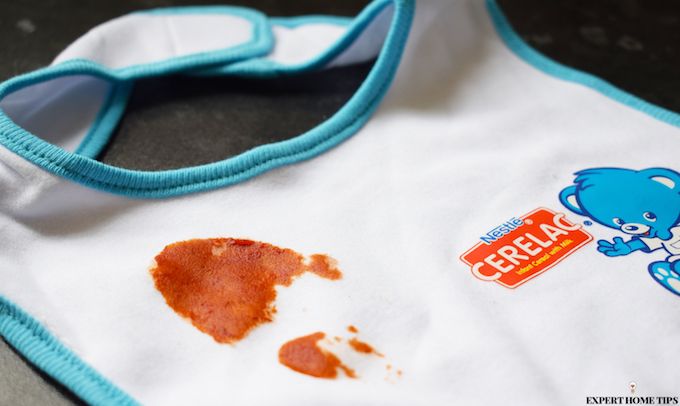
For 'organic' or 'natural' stains such as coffee, blood, wine and sweat, there's nothing better than hydrogen peroxide.
Mix two parts hydrogen peroxide with one part washing up liquid and apply to the stain to remove.
Use with caution as darker colours may lighten. Do a quick patch test first.
Find out how to use hydrogen peroxide to remove hair dye stains in our other article.
18. Brighten laundry
Have your whites seen whiter days?
Add a cup of hydrogen peroxide into water and soak any white laundry for 15-30 minutes before washing as normal. This should help revitalise your dull or discoloured whites.
19. Revive musty fabrics
If your seasonal wardrobe has been in storage for a few months, you can help de-funk that musty smell by mixing hydrogen peroxide with vinegar and spraying onto fabrics.
Be careful with dark clothes as the peroxide may cause them to lighten. This also works well with fabric suitcases and smelly towels - just be sure to patch test first.
20. Refresh reusable shopping bags
If your bags have started to look grubby or got a bit smelly, simply give them a quick spritz of H2O2 to clean, disinfect and remove any lingering food odours.
21. Clean rugs & carpets
If you own lighter coloured rugs and carpets, spray with hydrogen peroxide to remove any mud and food stains.
It will also help freshen them up!
22. Disinfect lunch boxes & plastic food storage containers

Smelly or discoloured food containers?
We have a solution...
...you guessed it, it's hydrogen peroxide!
Clean your food storage items with hydrogen peroxide then let them sit for a few minutes before rinsing thoroughly.
23. Remove aquarium algae
Aquariums can be an amazing feature in the home, but they sure take some looking after.
It's important to keep tanks free of algae, not just for aesthetic purposes, but for the health of your fish too.
Many people have had success using hydrogen peroxide to spot treat algae. Just be sure to read up on the dosage carefully - you don't want to cause harm to your fish!
24. Kill ants & other bugs
Ant infestation? There's a quick (and cheap) fix for that!
Spray diluted hydrogen peroxide directly onto ants to kill them.
How to clean with hydrogen peroxide
If it makes chores easier, we need it NOW.
25. Whiten grout
Hydrogen peroxide's whitening properties can really come in handy when it comes to cleaning.
If you’re battling with discoloured grout, make sure you try hydrogen peroxide.
Mix it with bicarbonate of soda to make a thick paste and apply onto the grout with a toothbrush. Cover with cling film overnight, scrub with a toothbrush the next morning to reveal blindingly white grout!
26. Deep-clean the toilet bowl
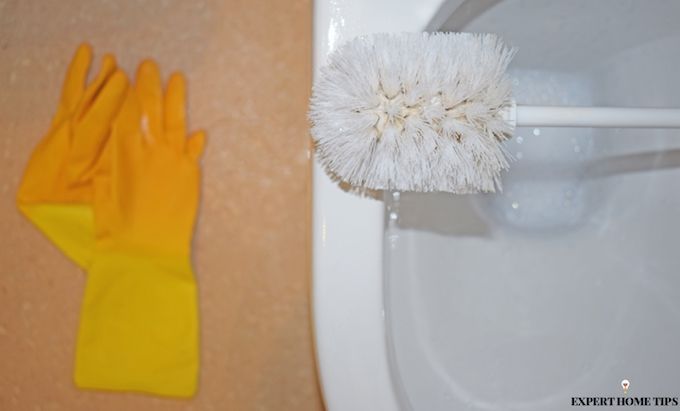
Considering what our toilets have to put up with, it's no doubt they get a little grubby from time to time.
Clean a neglected toilet bowl by pouring half a cup of hydrogen peroxide onto the sides of the bowl and using a toilet brush to scrub the sides. Leave for 30 minutes before flushing.
27. Remove bathtub scum
Baths are super relaxing, but the cleanup afterwards is often less so.
Get rid of stubborn soap scum by spraying hydrogen peroxide onto your tub and letting it sit for 10 minutes. It’ll blast through dirt and make it easier for your to sponge clean off.
28. Wash shower curtain
Shower curtains spend most of their time in a wet environment, which is unfortunately ideal for the development of mould.
Spray your shower curtain with 2 parts hydrogen peroxide and 1 part water and let for 10 minutes before rinsing. Air dry, and your shower curtain should look and feel much cleaner.
29. Control mould & mildew
Prevention is essential when it comes to mould.
Act before you see those ugly speckled spots by spraying hydrogen peroxide around your bathroom on areas where it could build-up, such as grout and silicon.
30. Disinfect kitchen countertops
Raw meat can bring animal faeces and other germs into your kitchen, so it's essential to disinfect your countertops regularly.
Spray them with hydrogen peroxide to safely kill any lingering germs and bacteria.
31. Clean the fridge

In our cleaning schedule, we recommend cleaning out your fridge every three to six months.
An easy way to tackle spillages and lingering food smells is with hydrogen peroxide.
Spray hydrogen peroxide around the inside of your empty fridge and leave to settle before wiping away with a clean, damp cloth. It'll leave your fridge smelling and looking brand new.
32. Disinfect cutting boards
Fresh produce can carry all sorts of germs into our kitchens, that's why it's extremely important to disinfect cutting boards thoroughly after every use.
An easy way to do this is spraying them in 3% hydrogen peroxide and leaving to stand for one minute before washing with water.
33. Sanitise sponges & dishcloths
Did you know sponges are the dirtiest item in the home? Shocking huh!
You can disinfect sponges and dishcloths by soaking in a bowl of one parts hydrogen peroxide diluted with two parts water.
Air dry before putting them to use again.
34. Clean stubborn food from pans
Washing up liquid not quite cutting it?
Get rid of caked-on foods from your pots and pans by combining baking soda with hydrogen peroxide to form a paste. Rub onto the pan and leave to settle for a few minutes before scrubbing away with warm water.
The baking soda acts like an abrasive while the hydrogen peroxide gets to work at breaking down the food.
35. Clean fruit & veg

Another way to tackle dirt in the kitchen is by washing your fruit and veg thoroughly with hydrogen peroxide when preparing your meals.
Not only will this kill germs, but also remove any pesticides which can be harmful to humans.
Spray fruit and veg with 35% hydrogen peroxide diluted with water, then wash.
36. Disinfect children's toys
Children aren't known for their cleanliness, and as a result, their toys can get pretty germy.
Hydrogen peroxide can be used to wipe down your kids' toys, toy boxes and play areas. It's much safer than most household cleaners and won't cause lung irritation.
37. Clean the pool
If you're lucky enough to have a pool, you'll know all about chlorine and the many problems it can cause.
A non-toxic alternative that may interest you is hydrogen peroxide. Head over to SFGATE to find out more.
38. Encourage seed germination
If you have green fingers, you'll know all about the struggle of getting your seeds to germinate.
Hydrogen peroxide can help with this, as it helps to break down the seed coating, allowing seeds to breathe more easily.
Soak seeds in a litre of water along with a few tablespoons of hydrogen peroxide to improve their ability to breathe, and also kill bacteria.
39. Clean glass surfaces

Windows and glass surfaces are notoriously hard to keep clean.
Spray hydrogen peroxide straight onto any dirty mirrors or windows to break down any dirt and wipe away with a clean damp cloth. Your windows will be sparkling clean and streak-free.
Where to buy hydrogen peroxide
Like the sound of some of the uses for this cheap budget product? You'll need some hydrogen peroxide to get started.
Depending on what you plan to use your hydrogen peroxide, you may need several different types. 3% hydrogen peroxide is the most popular and cheapest, however it contains other ingredients which can be more harmful - it's less 'pure'. 35% hydrogen peroxide, or 'food-grade' hydrogen peroxide, is recommended wherever possible.
With regards to buying hydrogen peroxide, it's best to pick it up online. Most beauty shops no longer stock it, and you may require a prescription to obtain it from a Chemist.
With so many uses, hydrogen peroxide is definitely an essential in our homes! What do you tend to use it for? Let us know in the comments below!
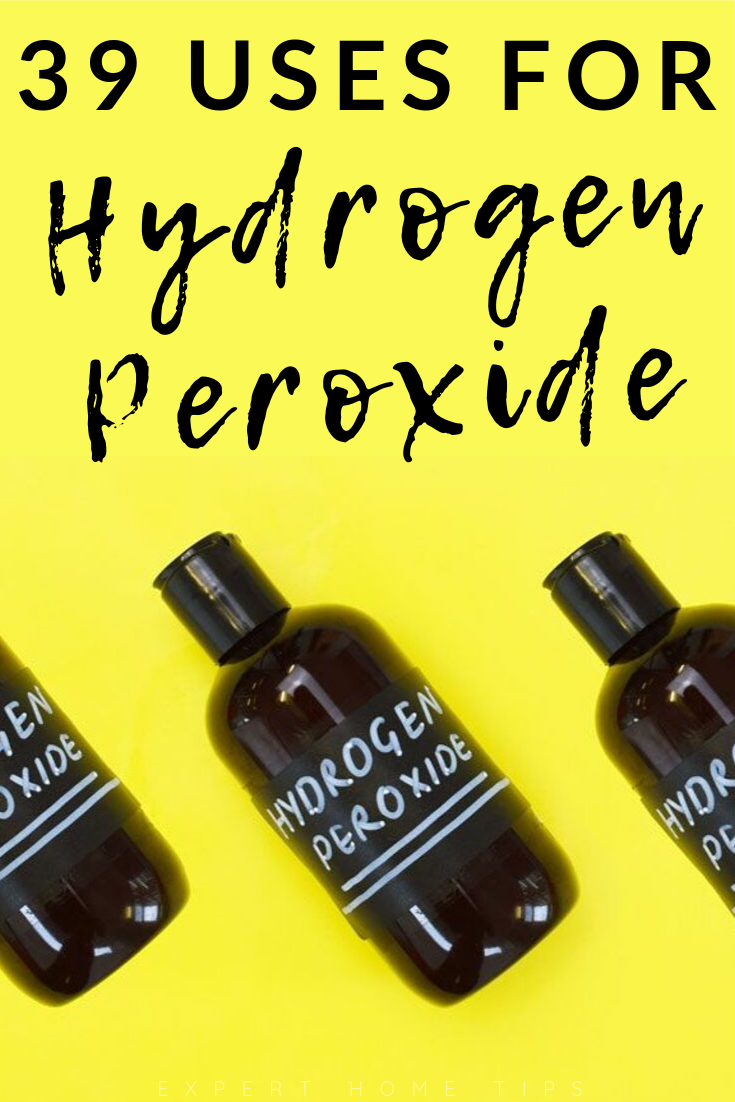
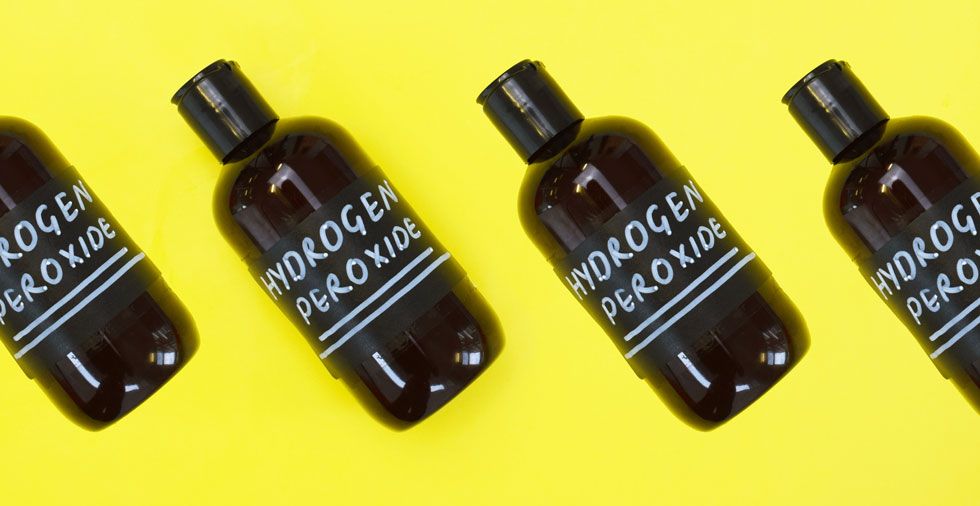
PLEASE REMEMBER THOUGH THAT IF YOU DILUTE IT AND STORE IN THE BOTTLE IT WILL LIBERATE OXYGEN AND THE BOTTLE CAN EXPLODE. Best to make up a small amount at a time. Not being alarmist, have made this mistake myself. Tip the peroxide in a cup or similar, dilute it there and after use discard any diluted solution..Please!
Thanks for sharing Dawn.
These tips sound great but where can you buy Hydrogen Peroxide, chemist, hardware store ? Would love to know, thank you.
Thanks for the question Sarah. You can find it in pharmacies and some hardware stores. It's also found on Amazon and online pharmacies. On the high street I have spotted it in Superdrug -http://www.superdrug.com/SDIE-Items-Restricted-to-0-quantity-for-Premium-Delivery/Hydrogen-Peroxide-Solution-9%25---30-Vols---200ml/p/225338
If you wear nail polish, remember to put on gloves before handling hydrogen peroxide. H202 will also remove your varnish as well as disinfect items!
Hydrogen peroxide needs to be neutralised after cleaning contact lenses as it will burn your eyes.
Thanks Elli. I have amended the article and linked to instruction on how to do it.
Yeah where can we buy this in the UK?? This, along with rubbing alcohol, have long been essentials in every home I've lived in but I cannot find them here in England!
Your best buying it online from Chemist Direct or Amazon. You can also find it in larger Superdrug stores.
From Wikipedia: Rubbing alcohol refers to either isopropyl alcohol (propan-2-ol) or ethanol based liquids, or the comparable British Pharmacopoeia defined surgical spirit, with isopropyl alcohol products being the most widely available
You can buy Hydrogen Peroxide from Amazon, it's really cheap!
Where can I buy this please
Hi Elaine you can find it online from big retailers like Amazon. A bottle of the 'Care+' brand can also be found in larger Superdrug stores.
Where can I buy this hydrogen peroxide.please
Hi Elaine you can find it online from big retailers like Amazon. A bottle of the 'Care+' brand can also be found in larger Superdrug stores.
I buy it at normal bog standard local chemists,ie Co op chemist or local small chemists here in UK....just wondering if need to dilute if using S tooth white nervous or do you mix it to a paste with baking soda? Ty
I buy it at normal bog standard local chemists,ie Co op chemist or local small chemists here in UK....just wondering if need to dilute if using S tooth white s or do you mix it to a paste with baking soda? Ty
Hi Andrea, yes I would dilute it first then make a paste with the baking soda. Let me know how it goes!
Ha ha ha I have no idea why nervous came up on my reply???!! ?
On #27 you show (1.2) what does that stand for ?
Hi Roberta. This means 1 part hydrogen peroxide to 2 parts water. I hope that helps :)
Is it safe to store in home because it should not cause an explosion under certain factors so can u explain it ?
Hi Ajzayn. Make sure to store it out of reach of children & away from direct heat and it should be perfectly safe.
I started the 20 day regiment but as not home for 2 days so when I came back I started where I left off. Is that OK? Also what if you miss the 3rd treatment do you continue to the next level the next day or do you stay at that lever another day? How do you get rid of the aftertaste?
Hi there, John! Can I ask what treatment it is that you're referring to?
Is it true that mixing Hydrogen Peroxide and baking powder will get rid of perspiration crusty buildup in the under arm area of shirts?
Mixing hydrogen peroxide and baking powder may help remove sweat and crusty buildup in the underarm area of shirts, as hydrogen peroxide can break down the proteins in sweat stains and baking powder can neutralize the acidic odour and loosen the stain. However, it is essential to test this solution on a small, inconspicuous area of the fabric first to ensure it does not cause any damage or discolouration.
I have recently been into my loft to recover baby clothes which have been wrapped and boxed for several years. I was amazed at how well most of them have kept some look brand new. The odd ones (some unworn) however have spadmodic yellowing. This has happened on various fabrics. Some are wool others are typical romper suite material etc. Some of them look like iron mould spotting which has amazingly washed out with a little soaking in washing powder others are stubborn but I admit I have only tried a few as I preferred to seek help before setting in any stains which could have been removed with advice. Please can you help me????
To remove yellowing and spotting from baby clothes, try soaking them in water and white vinegar, using a stain remover, baking soda and water paste, or using a gentle, pH-neutral detergent. Always test any stain removal method on a small area first, and avoid using hot water or bleach.
If I used it on my carpet do I dilute it and what’s the ratio
Hydrogen peroxide can be used to clean carpets, but it should always be diluted with water before use. A standard dilution ratio is 1 part hydrogen peroxide to 3 parts water.
Great article, thanks! I've been using hydrogen peroxide for decades and still learned some new uses from this article. It's also great for helping to heal any new piercings. Just dilute 6% HP with equal amount of water then soak a cotton bud and apply to piercings (or dip your pierced bit/s in a small bowl of the solution). It fizzes and you'll see all the gunk come out. No need to rinse. Repeat daily. It's also good for clearing up nail fungus. Again, dilute 6% HP with equal amount of water and soak nails in a bowl if you can, or apply with a cotton bud soaked in the solution. No need to rinse. Repeat twice weekly, or weekly is fine too. Finally, it's also good to apply to teeth to clear any hidden gunk. Same solution as before, applied with a soaked cotton bud (you may need more than one). Don't be alarmed by the fizzing action - it's fairly entertaining :) Spit the residue into a tissue and keep going for a few minutes, maybe with a new cotton bud as the more they get soaked the more they tend to disintegrate. Afterwards rinse & swoosh your mouth to get rid of any residual debris.
It's essential to consult with a healthcare professional before using hydrogen peroxide for medical purposes, especially for piercings. In addition, using hydrogen peroxide on teeth should be done cautiously to avoid potentially damaging tooth enamel.